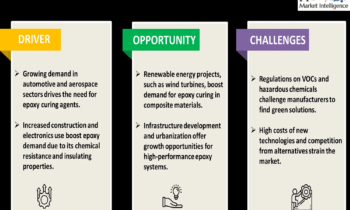If you are looking for a new investment opportunity, soybeans may be the right choice! Soybeans offer many benefits as an investment, including stability and potential growth. This blog post will discuss how to invest in soybeans and how they can benefit your portfolio.
What Are Soybeans?

Soybeans are a type of legume that is native to East Asia. They are mainly used for livestock feed and soybean oil production. However, soybeans can also be used in human food, such as tofu and soy milk. The United States is the leading producer of soybeans, followed by Brazil.
There are two main types of soybeans: edamame and yellow soybeans. Edamame soybeans are the most common type of soybean, and they are mainly used for human consumption and as soybean meal. On the other hand, Yellow soybeans are used primarily for livestock feed and oil production. Edamame soybeans are typically green, while yellow soybeans are yellow or brown.
Soybeans Market Statistics
The soybean market and agricultural commodities are worth billions of dollars and continue to grow each year. In 2017, the global soybean production was estimated at 341 million metric tons. The United States produced 110 million metric tons of soybeans in 2017, making it the leading producer in the world.
5 Benefits Of Investing In Soybeans
There are many benefits of investing in soybeans. Here are five of the most important benefits:
Soybeans offer stability: The soybean market is relatively stable, making them a good investment for risk-averse people.
–Soybeans have the potential for growth: The demand for soybeans is expected to grow in the coming years, which means that soybean prices are likely to increase.
–Soybeans are a versatile crop: Soybeans can be used for many different purposes, such as livestock feed, oil production, and human food.
–Soybeans are traded on global markets: Soybeans are traded on international markets, allowing investors to profit from global price changes.
–Soybeans are a renewable resource: Soybeans are a renewable resource, which means that they can be grown again and again. This makes them a sustainable investment.
How To Invest In Soybeans?

Now that you know the benefits of investing in soybeans, you may be wondering how to invest in them. There are a few different ways to invest in soybeans:
Buy Soybean Futures
Futures contracts are agreements to buy or sell a certain amount of soybeans at a set price on a future date. Soybean futures are traded on many different exchanges. Futures markets are a risky investment because the cost of soybeans can go up or down, and you may not be able to sell your futures contract at a profit. However, the main advantage of investing in soybean futures is that you can make a lot of money if the price of soybeans goes up.
Buy Soybean ETFs
ETFs are a type of investment that tracks the price of soybeans. You can buy soybean ETFs on many different exchanges. Soybean ETFs are a good investment for those who want to invest in soybeans without the risk of buying futures contracts. The main advantage of ETFs is that they are low-risk and easy to trade.
Buy Soybean Futures Options
Futures options are a type of investment that gives you the right, but not the obligation, to buy or sell soybean futures at a set price on a future date. Futures options are traded on many different exchanges. The main advantage of investing in future options is that they are less risky than buying soybean futures.
Shares Of Soybean Companies
Another way to invest in soybeans is to buy shares of companies that produce soybeans. You can buy shares of these companies on many different exchanges. The main advantage of investing in soybean companies is that you will benefit from the company’s success or failure.
Soybean Contracts For Difference (CFDs)
CFDs are a type of investment that allows you to speculate on the price of soybeans without actually owning any soybeans. CFDs are traded on many different exchanges. The main advantage of investing in CFDs is that they are very leveraged, which means that you can make a lot of money if the price of soybeans goes up.
As you can see, there are many different ways to invest in soybeans. You will need to decide which method is right for you based on your investment goals and risk tolerance.
Things To Consider Before Investing In Soybeans

Before you invest in soybeans, there are a few things that you need to consider. Here are some of the most critical factors:
Your Investment Goals
What are your investment goals? Are you looking to make a quick profit, or do you want to invest for the long term? Soybeans can be a good investment for both short-term and long-term investors. The investment method that you choose should be based on your investment goals.
Your Risk Tolerance
How much risk are you willing to take? Futures contracts and options are precarious, but they can also be very profitable. On the other hand, ETFs and shares of soybean companies are less risky but will also provide lower returns. Therefore, you need to decide how much risk you are willing to take before investing in soybeans.
Your Time Horizon
How long do you plan on holding your investment? If you are investing for the long term, you can afford to take more risks. If you are investing for the short term, you need to be more cautious.
Your Investment Budget
How much money do you have to invest? If you have a significant investment budget, you can afford to take more risks. On the other hand, if you have a small investment budget, you need to be more conservative.
Now that you know how to invest in soybeans and what to consider before investing, it’s time to start researching your investment options.
Final Thoughts
Investing in soybeans can be a great way to make a profit. However, you need to consider your investment goals and risk tolerance before investing carefully. You also need to choose the proper investment method for you.
If you are looking for a low-risk investment, you should consider buying soybean ETFs or shares of soybean companies. However, if you are willing to take more risks, you should consider buying soybean futures or options.
No matter what investment method you choose, make sure you do your research before investing.
Interesting Read
Why Investors Fail To Do What Works
Which Investment Has The Least Liquidity?
Nine Tricks Real Estate Investors Use to Plan Their Exits
Pros and Cons of Investing in Sustainable Businesses in 2022



